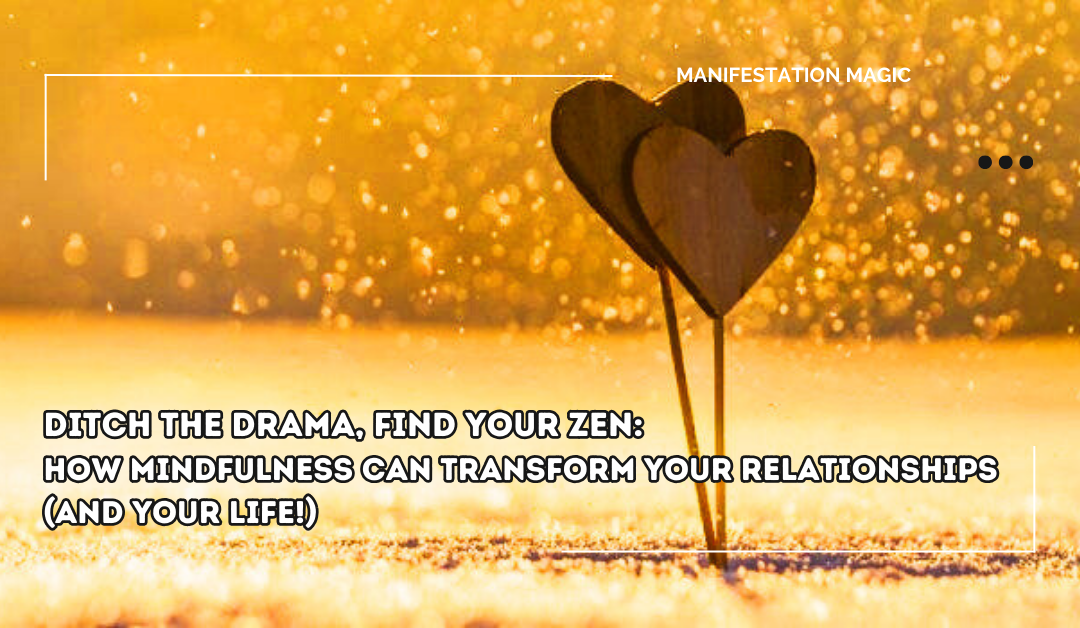I have to admit I was skeptical when I first heard about mindfulness.
It conjured images of incense and chanting, a retreat from the daily grind rather than a tool for it.
But like many things in life, a deeper dive revealed its surprising potential.
Think about it…
How often are we truly present in the moment?
We dwell on past mistakes or fret about the future…
leaving the present to feel like an empty waiting room.
If you’ve ever felt that familiar tug-of-war at your desk…
Deadlines looming…
Inbox overflowing…
Notifications buzzing…
Your focus is stretched thin…
You became anxious and worried…
Then mindfulness might be exactly what you need.
The Power of Mindfulness
Mindfulness is the art of being fully present in the moment without judgment.
It’s about observing our thoughts, emotions, and sensations as they are, not as we want them to be.
This might sound simple, but it’s incredibly powerful.
As we practice, we create space between ourselves and the constant mental chatter.
This allows us to step back from the chaos and stress… and gain a clearer perspective.
The result?
Increased focus and productivity… enhanced creativity in problem-solving… and a greater capacity for emotional well-being.
Starting Your Journey
Beginning a mindfulness practice can be as simple as taking a few minutes daily to breathe deeply and focus on the present moment.
It’s not about emptying your mind.
It’s about being aware of your thoughts and letting them pass without getting caught up.
Mindfulness in Daily Life: Expanding the Practice Beyond Meditation
The true essence of mindfulness lies in its universality.
It’s not confined to the cushion or meditation mat.
Instead, mindfulness can be integrated into our daily lives…
transforming ordinary moments into opportunities for awareness and connection.
Mindful Eating: Savoring Each Bite
Let’s start with something we all do: eating.
Mindful eating is about fully experiencing your food.
It’s slowing down to notice the colors, the textures, and the aromas.
As you take each bite, pay attention to the flavors and the sensations in your mouth.
Notice the act of chewing and the feeling of fullness.
Mindful eating turns a routine activity into a rich, sensory experience and fosters healthier eating habits.
Mindful Walking: Every Step a Discover
Walking is another everyday activity where mindfulness can play a pivotal role.
As you walk, whether it’s a brisk morning commute or a leisurely evening stroll,
become aware of your surroundings.
Feel the ground beneath your feet.
Feel the rhythm of your steps.
Feel the movement of your body.
Observe the sights, the sounds, and the smells around you.
Mindful walking is grounding yourself in the moment… turning a simple journey into a refreshing and rejuvenating experience.
Mindfulness in Chores: Finding Joy in the Mundane
Even chores can become a practice in mindfulness.
When washing dishes, for example, feel the warmth of the water, the texture of the soap suds, and the motions of your hands.
Instead of rushing through these tasks with your mind elsewhere, focus on the activity.
This approach can transform mundane tasks into meditation…
helping you find a sense of calm and accomplishment in everyday duties.
Mindful Listening: Deepening Connections
In conversations, practice mindful listening.
This means fully focusing on the other person.
Observe their words, tone, and body language…
without formulating your response while they are still talking.
Mindful listening fosters deeper, more empathetic connections and improves relationships.
Mindfulness at Work: Enhancing Focus and Creativity
Incorporate mindfulness into your work life.
During meetings or while tackling projects, be fully present.
Notice when your mind wanders and gently guide it back to the task.
This increases your efficiency and focus and enhances creativity and problem-solving abilities.
Reflecting on Emotions: A Mindful Approach to Feelings
Lastly, apply mindfulness to your emotional life.
When you experience strong emotions, instead of reacting impulsively,
observe these feelings with curiosity and without judgment.
Feel them fully… understand their nature and what they can teach you.
This approach can lead to greater emotional intelligence and resilience.
Overcoming Obstacles
It’s normal to encounter distractions and challenges on your mindfulness journey.
Recognizing these obstacles and gently bringing your focus back to the present is key.
Remember, mindfulness is a skill that gets stronger with practice.
The Transformation:
As you deepen your mindfulness practice, you’ll notice a shift.
The storm of thoughts and worries starts to settle, and clarity emerges.
You’ll find yourself reacting less impulsive and making decisions with greater calmness and insight.
Beyond the Self
Mindfulness also opens the door to deeper connections with others.
By being present, we engage more authentically with the people around us…
leading to more meaningful relationships.
Mastering mindfulness is a journey.
Each step on this path takes you closer to a place of clarity, peace, and understanding.
In a world filled with noise and chaos, mindfulness is your compass…
guiding you to a life of greater calm, connection, and clarity.
So why wait?
Begin your journey today and discover the transformative power of mindfulness.
Have you ever tried mindfulness practices?
What are your biggest challenges or successes?
Share your thoughts in the comments below!

